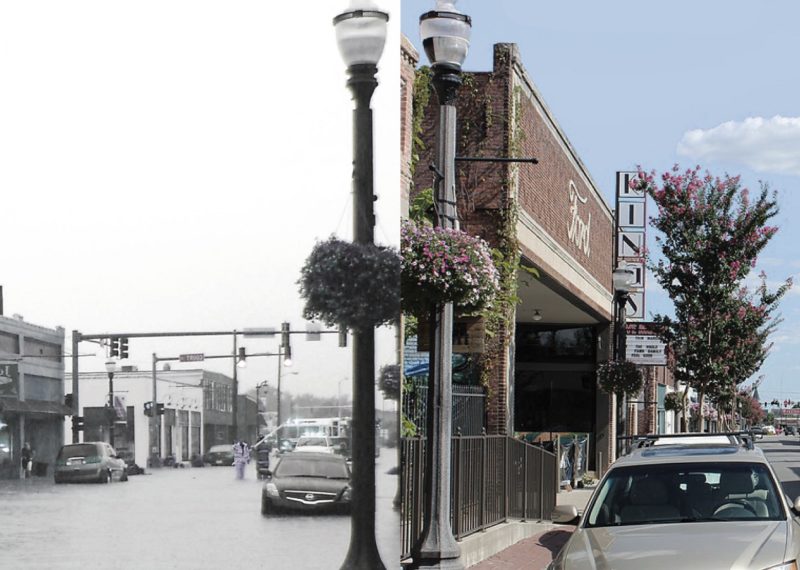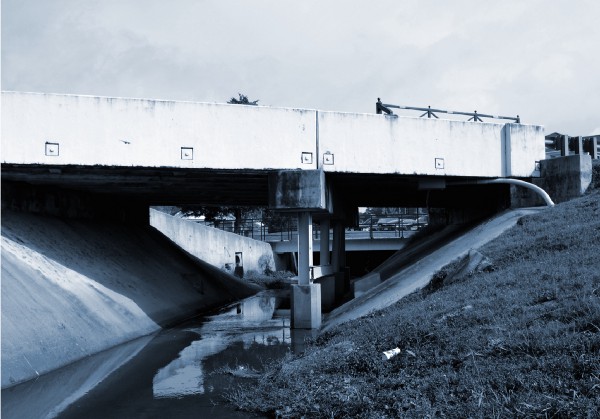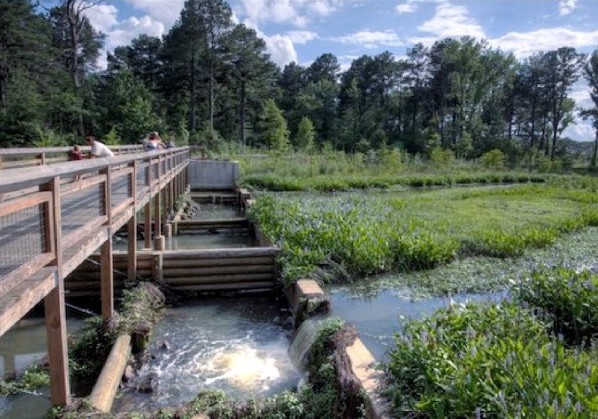Set just northeast of the Arkansas River, the City of Conway has a history of damaging floods. As severe storms grow more frequent, the problem is getting worse. Recent floods ravaged downtown shops and damaged homes.
“Conway has been flooding — a lot,” said Marty Matlock, a professor of ecological engineering at the University of Arkansas in Fayetteville. “They are losing a lot of money. They are losing a lot of property, and it is a threat to people’s lives and well-being.”
However, storms are only part of the problem. Conway has rapidly expanded since the 1960s. Now blacktops and buildings cover more ground. Storm water that once soaked into the soil now collects above ground. Neighborhoods downstream face the brunt of storm surges, especially homes abutting Lake Conway, one of the nation’s largest recreational reservoirs.
Complicating matters, anglers don’t want to channel too much water away from the lake. After storms, fish move into the lake’s vegetated shallows to feed. “The regional fishermen love it when it’s flooded,” said University of Arkansas architecture professor Steve Luoni. “The property owners, of course, don’t want it to flood.”
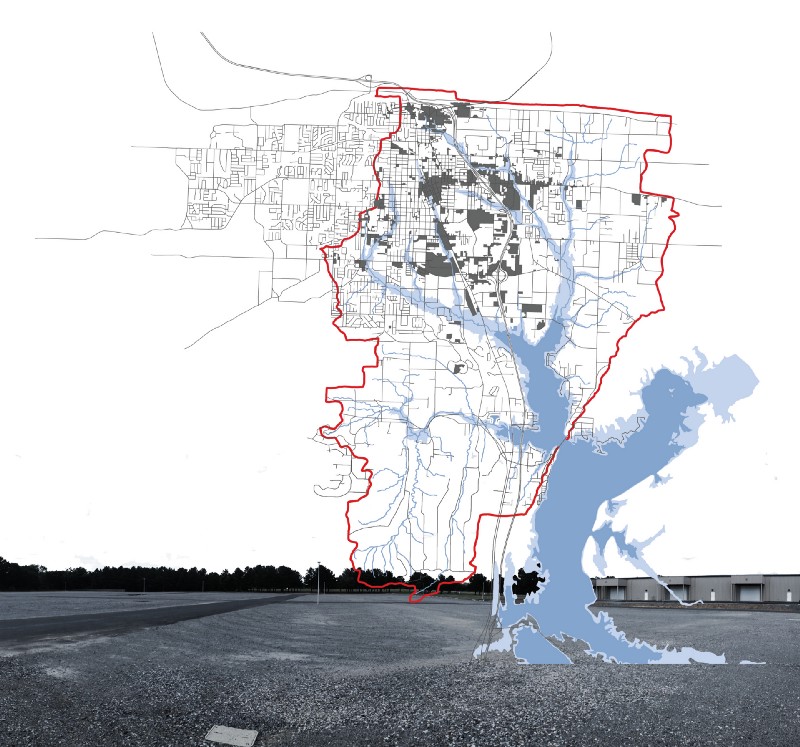
No simple answers
After historic flooding in 2011, the community decided something had to be done — but there was no obvious solution. In early meetings, homeowners and anglers clashed, occasionally coming to blows.
“The majority of people who came to the table — and it was quite a few — lived around Lake Conway and were impacted by the torrential flooding,” said Scott Grummer, a Conway city planner. “Those who kept coming were the ones who were willing to work together.”
Luoni and Matlock were sent in by the state to aid Conway. They helped defuse tensions. The longtime collaborators have a record of solving big infrastructure problems.
“These are generally local problems,” says Luoni, “but almost all have global consequences and global, common characteristics.” After listening to locals at a series town halls, Luoni and Matlock crafted the Conway Urban Watershed Framework Plan. It lays out strategies to tame the floodwaters while improving the lake for anglers.
Changing in place
One of Conway’s first improvements was a new footbridge over Hendrick’s Creek. Engineers replaced a concrete structure designed to direct water with a wooden new structure that slows the flow of water, allowing it to soak into the earth. This prevents damage to infrastructure downstream.
Now, the city is considering adding grassy patches to parking lots. Green spaces would break up the blacktop, and give floodwaters somewhere to drain. The city is also looking to plant more trees, which further slow runoff — an acre of cottonwoods and willows can absorb a million gallons of water each year. Green spaces also clean rainwater as microbes in the soil digest pollutants.
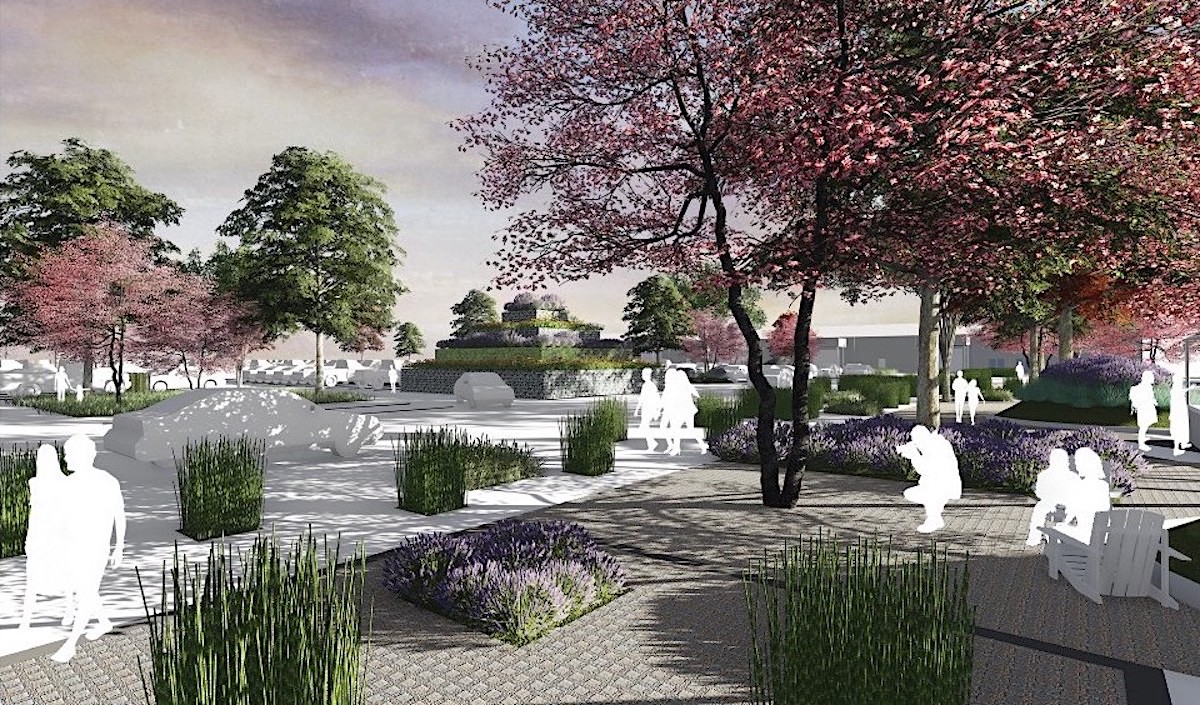
Some recommendations are more involved. The plan calls for the city to convert a metal scrapyard into a park with tree-covered, earthen mounds and ponds. These structures will absorb runoff. The park will also drive foot traffic to nearby shops and restaurants.

To protect Lake Conway, Luoni and Matlock called for the city to install colonies of freshwater mussels that can filter out dangerous microbes, like E. coli, that gather in the water. They also recommend the city deploy cutting-edge technologies to keep the lake healthy. Those include machines to aerate the water and clear debris from the lake.
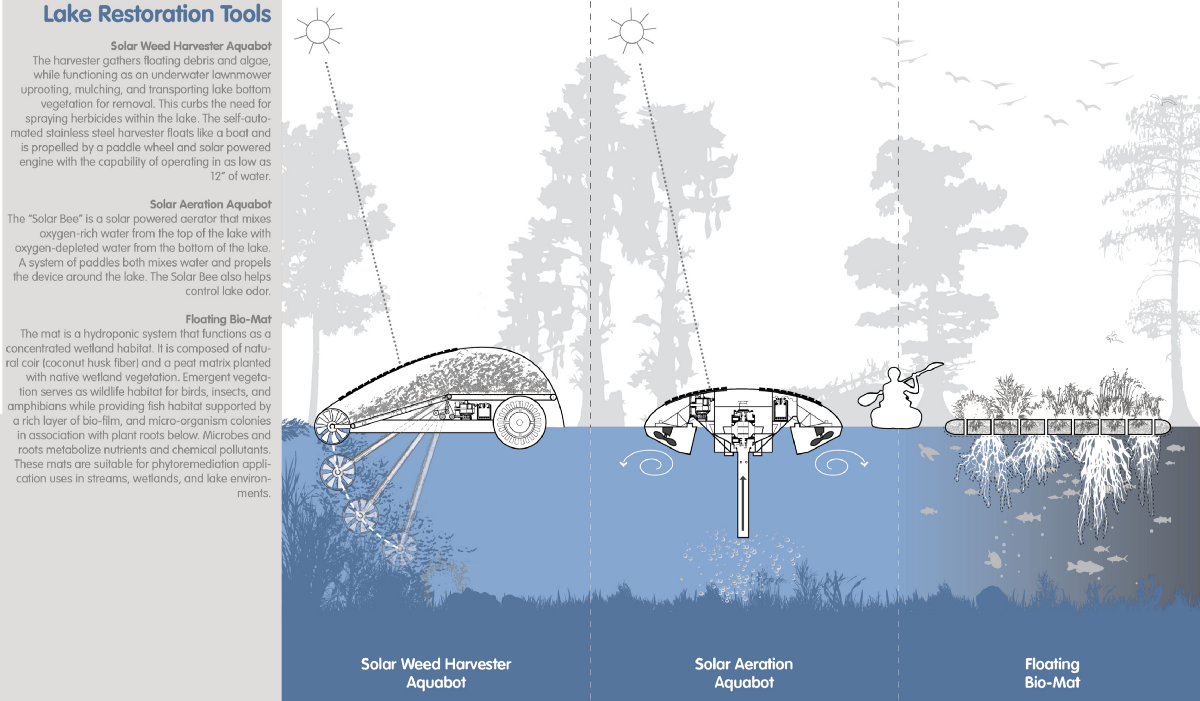
“Most people, they want you to fix it, fix things now — whereas nothing ever gets fixed quick,” said Grummer. The key to finding solutions, he explained, is to make sure everyone has had a say. Thus, as the city builds out green spaces, it will continue to host town halls.
Little by little, the people of Conway are preparing for severe flooding. By coming together, they have shown that a community can get ahead of its storms.
Josh Chamot writes for Nexus Media, a syndicated newswire covering climate, energy, policy, art and culture.

